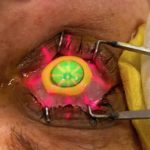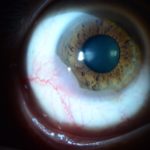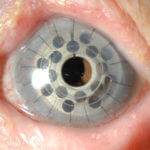Corneal Surgical Procedures
With procedures such as corneal transplantation, pterygium surgery, and other options, we can reduce the symptoms and risks to your vision caused by corneal disease or trauma.
Call Us: 215-928-3300
With procedures such as corneal transplantation, pterygium surgery, and other options, we can reduce the symptoms and risks to your vision caused by corneal disease or trauma.
Call Us: 215-928-3300
Corneal conditions can lead to visual deterioration and even complete vision loss, so it is necessary to have your eyes evaluated on a regular basis and seek treatment at the first signs of vision problems.

ADDITIONAL CORNEAL SURGICAL PROCEDURES

CORNEAL CROSS-LINKING (CXL)
Corneal cross-linking is an office procedure to stop the progression of keratoconus or corneal ectasia after laser vision correction (e.g., LASIK) in eyes without significant corneal thinning or scarring. The current FDA approved corneal cross-linking technique involves removing the surface layer of the cornea (the epithelium), applying riboflavin drops and then shining an ultraviolet light on the cornea. There is some post-operative pain for several days, and the vision is blurred for several weeks to a few months. Corneal cross-linking is highly successful, but there are potential complications such as infection and scarring and rarely, the condition may progress despite the CXL procedure.

AMNIOTIC MEMBRANE TRANSPLANTATION
Certain abnormalities of the cornea and conjunctiva that aren’t healing well may respond to an amniotic membrane graft. Amniotic membrane tissue is commercially available for such procedures, which are generally performed in the operating room under topical or local anesthesia.

LIMBAL STEM CELL TRANSPLANTATION
Stem cells that generate the epithelial cells that cover the cornea reside at the edge of the cornea, also called the limbus. Certain conditions, such as aniridia or other causes of stem cell deficiency, can be treated with a limbal stem cell transplant. The new cells can be obtained from the other eye or from a living or deceased donor.

REMOVAL OF CONJUNCTIVAL LESIONS
Cancers that more commonly affect the skin, such as squamous cell cancers, can also affect the conjunctiva. Abnormal growths on the conjunctiva may require surgical excision (conjunctival biopsy which is then sent for pathological review) and possible cryotherapy (freezing treatment) to avoid spread of the lesion. This surgery is typically performed using local anesthesia in the operating room.

KERATOPROSTHESIS
Boston keratoprosthesis is a common type of artificial corneal transplant that we use in some eyes when a traditional corneal transplant may not be successful. The surgery is performed in the operating room under local or general anesthesia.
